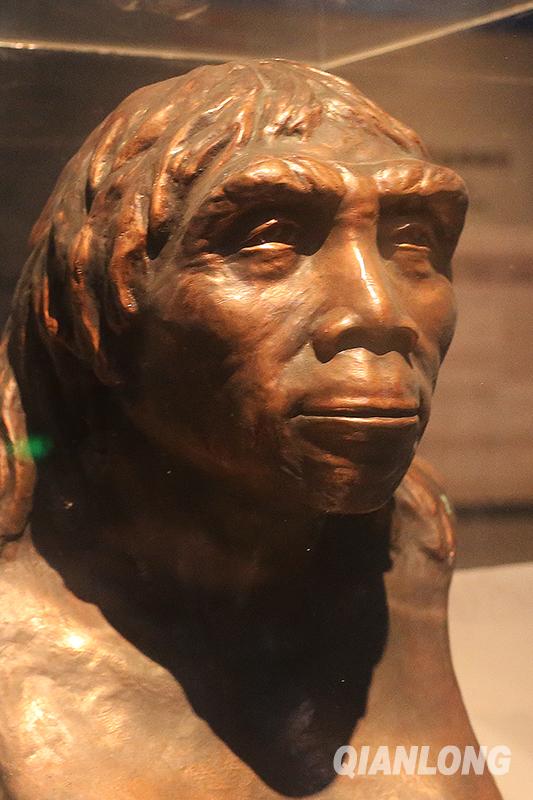

Cultural Heritage
As primitive men evolved from ape-like men to intelligent men, Peking Man learned how to make tools in the early Paleolithic period, marking them as humans, different from apes.
The discovery and study of Peking Man and his culture solved the 50-year-long controversy over whether ape-men were apes or men, which resulted from the excavation of Java Man in the 19th century. Evidence indicates that at the dawn of human civilization, ape-men existed and they were descendants of southern apes and ancestors of intelligent men, judging from their physiques, culture and social organization. Peking Man still serves as the benchmark for judging whether an ancient creature was an ape or homo sapiens. The Zhoukoudian Site is invaluable for paleo-anthropological research.
Fossils
In December 1929, under the leadership of Chinese anthropologist Pei Wenzhong, a team from the Peking Institute of Geology excavated the first skull fossil of Peking Man. It was identified as being at least 690,000 years old. In the following large-scale excavation, many skulls, bones, teeth and bone segments were discovered.
Evolution From Ape to Man
The site of Peking Man is a large natural cave. Some 700,000 years ago, a species of homo sapiens lived here for about 300,000 years, leaving several layers of ash as evidence of the use of fire. Numerous stone tools were excavated as well.
In 1933, fossils of the New Cave Man, who lived about 50,000 to 20,000 years ago, were discovered. He was a descendant of Peking Man, but much more evolved. He resembled modern human beings in appearance, with fairly well developed intelligence and superior physique to Peking Man.
Address: 1 Zhoukoudian Dajie, Fangshan District
Tel: +86 10 6930 1278
Open: 8:30 a.m.-4 p.m. (November 1-March 31)
8:30 a.m.-4:30 p.m. (April 1-October 31)
Admission: 30 yuan for adults, 15 yuan for children and elderly
Traffic: Take bus No. 917 from Tianqiao to Liangxiang Ximen, or bus No. 616 at Beijing West Railway Station to Liangxiang Ximen, and then take bus No. 38 to Zhoukoudian.
 |
|
A statue of Peking Man is on display at Zhoukoudian in Beijing's Fangshan district. [Photo by Wang Zibin/Qianlong.com] |